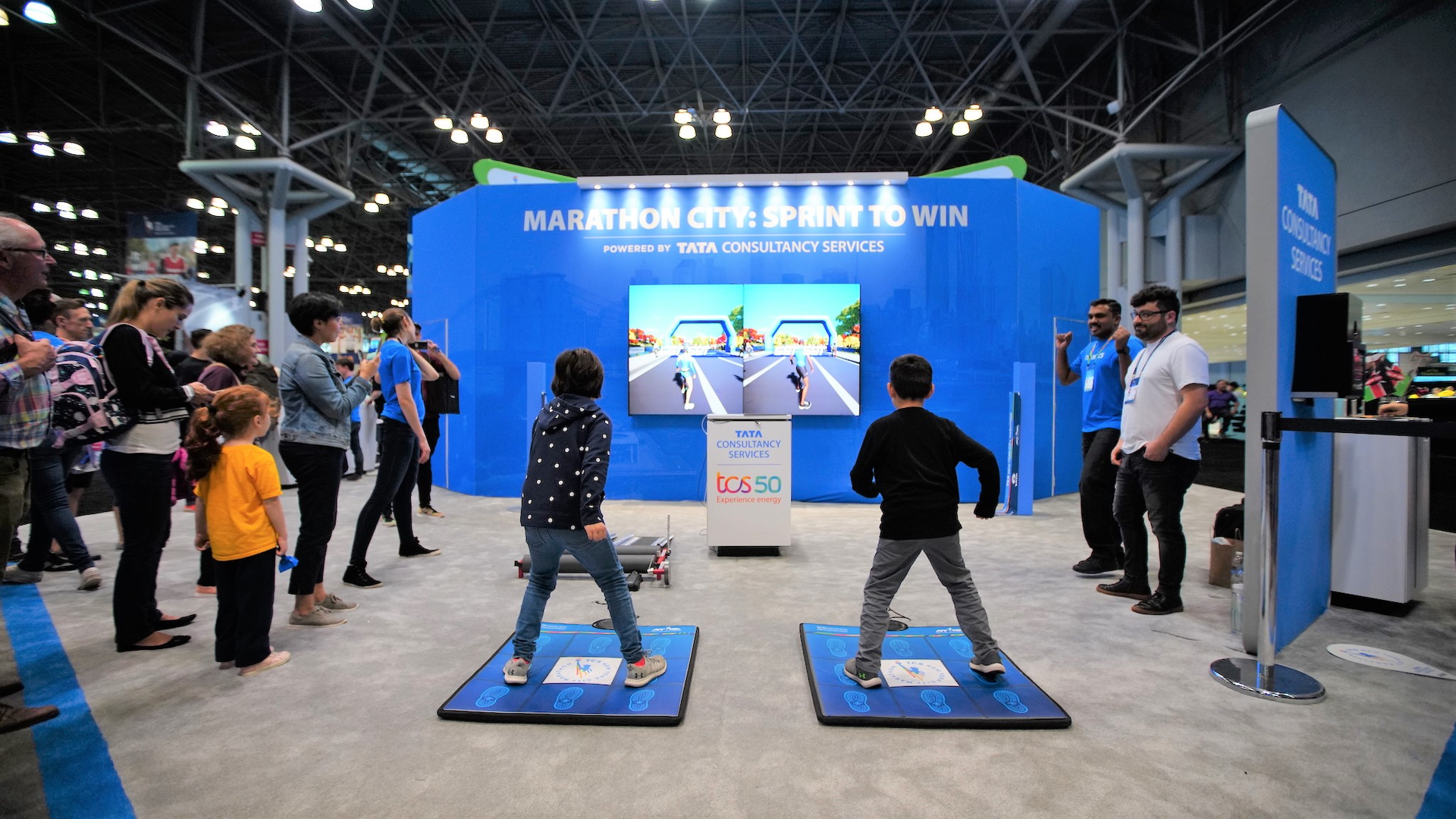In the race to develop a helpful and likeable virtual assistant, developers at Tata Consultancy Services are running a marathon, not a sprint. Specifically, they’ve been title sponsors of the TCS New York City Marathon since 2014, where in 2017 they introduced “Pacey Miles,” an animated assistant built as an Apple tvOS app. Participants on site could test Pacey’s resourcefulness by asking her practical questions like where the race starts, or more trivial facts like who won the previous year’s contest.
With all the design that went into creating Pacey, TCS developed best practices to pass onto corporate clients. By placing her at a premier event like the marathon, they also shined a light on their own marketing philosophy.
In terms of marketing tech and design, the values that are demonstrated in the thoughtful creation of a character like Pacey Miles can only be successful when marketing and digital design are running side by side. Sunil Karkera, Global Head of TCS Interactive, sees increased consolidation in the years ahead, as companies need more and more marketing tech experience in-house.
“There is a tension in not having a unified strategy around marketing,” said Karkera, surveying the current field. “The whole of marketing tends to be focused around creative. Technology changes the ways customers are targeted and the channels that are used. There can be too much emphasis on a single point of contact with customers. Marketers focus heavily on the technology part without thinking of the actual person encountering the brand.”
He added that “emotions have been forgotten,” and suggested he’d like to see the “emotional connection” brought back into marketing, where the focus has increasingly been on digital touchpoints.
In the development of the Pacey Miles assistant, Karkera’s team aspired to bring to life a “personality” that was witty and quirky, but could also “fail gracefully,” so that the chatbot wouldn’t annoy marathoners if she couldn’t understand a particular question. By connecting Pacey with high-speed cloud-based intelligence, she had the capacity with AI natural language processing to address questions some of the event hosts couldn’t even answer, Karkera explained. The Apple TV app was determined to be the best format to present a life-size character, which also made it more relatable.
To get more people involved at this past year’s marathon, TCS Interactive developed a running game that incorporated a dual-screen and dance pad interface so that two joggers of any size or ability could race each other. To include as many people as possible, the design team also considered the two kinds of races in which New York marathoners participate – foot racing, as well as wheeling. The game allows athletes who use a wheelchair to compete with those who run on foot.
The successful game was the first ever created by TCS’s in-house design studio, demonstrating Karkera’s views about in-house marketing consolidation. At the same time, it opened up the experience to young children and older people of all abilities, enabling the team to learn more about conversational design.
“The marathon took us to the next level of design,” Karkera stated. These fan experiences provided content that consumers could interact with, enhanced by the full context of the New York race.
“Marketing is often created around big media consumption,” Karkera pointed out. “But most customers are consuming mobile media on small screens, which makes [the big-screen messaging] out of touch. We see this in content creation and technology. Marketers should be in touch with their consumers and aware of where the touchpoints are.”
To keep up with the advances in marketing technology, Karkera holds that companies need to evolve organizationally.
“Companies need to be focused on the organizational design of their marketing department. CMOs shouldn’t be relying just on outsourcing all of their technology, but should have people within their organization who understand the design,” he said. “Organizations don’t necessarily need to hire their own CIO; but [they should staff] a ‘Director of Technology’ who can understand it, so that the company has the know-how. This technology know-how is similar to design know-how, and brings an understanding of how things are done.”
From TCS’s perspective, they are following in this trend to consolidate by acquiring and developing their own marketing tech capabilities.
With several more years to go in their title sponsorship of the TCS New York City Marathon, the race continues in training and refining this technology in the evolving customer-centric space.







